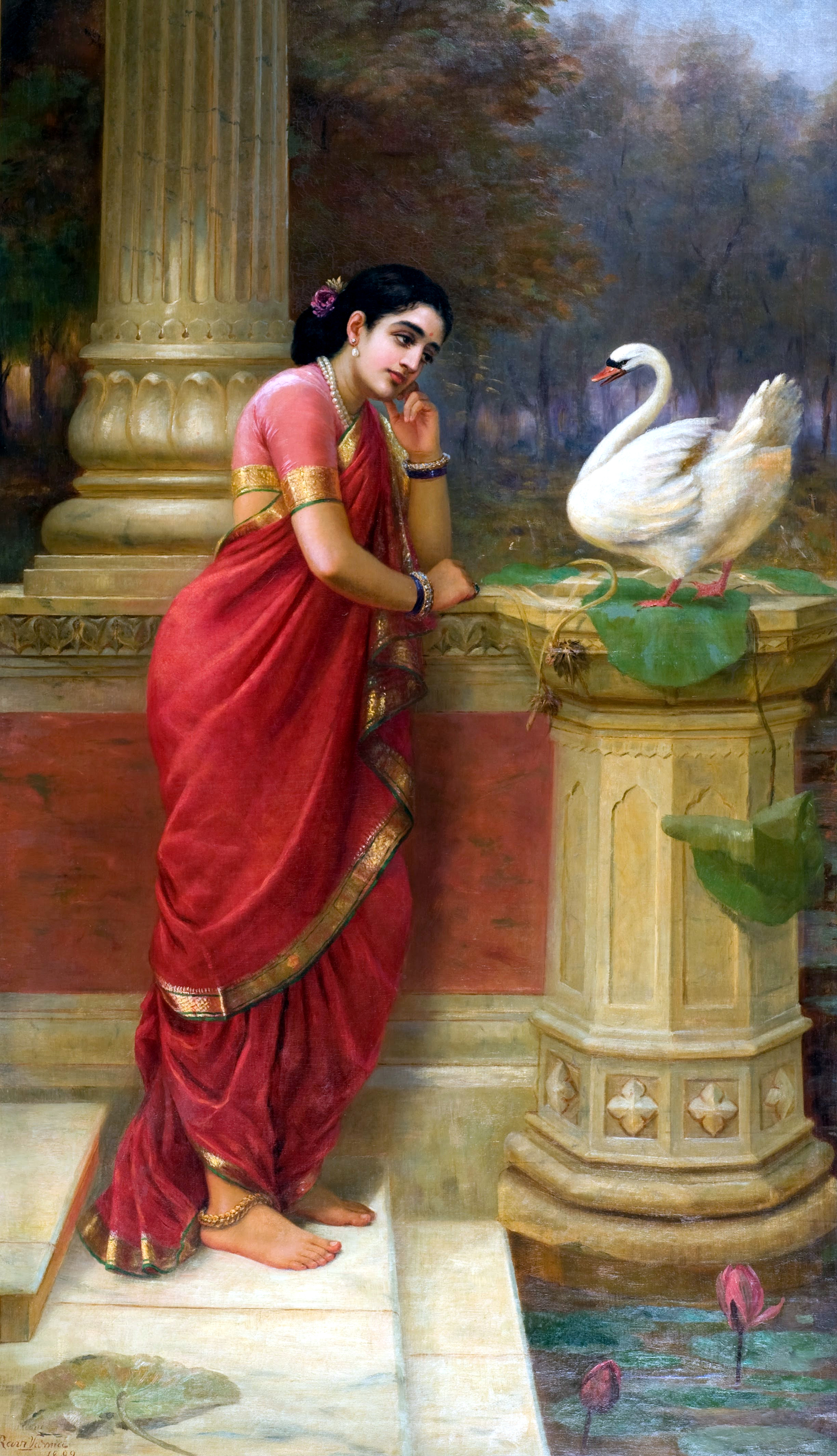 |
| Battle of Lanka, from Ramayan Sahibdin, Public domain, via Wikimedia Commons |
Dawn breaks over a paper battlefield no wider than a folio.
Horses rear in jewel-toned panic, their hooves frozen mid-air. Lances tilt like lightning bolts, and drums throb silently along the margins.
In Indian miniature paintings, battle scenes and political conquests do not merely record history—they stage it, compressing the thunder of empires into intimate, incandescent worlds. These paintings show power as a lived spectacle: the sweat of war, the ritual of kingship, and the choreography of conquest rendered with surgical precision and poetic excess.
The Miniature as Theater of War
Step closer, and the scale shifts. What seems small swells into a crowded arena where every figure performs a role. Mughal miniatures, especially, unfurl like courtly epics. In a folio from the Akbarnama, the emperor Akbar appears again and again across the same page—charging a fort here, conferring with generals there—time folded so that conquest becomes omnipresent. Armor glints in stippled gold; banners ripple in vermilion and indigo; elephants lock tusks as if the page itself strains under their weight.
The painter does not explain strategy; he shows it. Ranks align with mathematical calm, archers release in unison, and commanders occupy elevated ground—visual hierarchies mirroring political ones. The battlefield becomes legible, a diagram of sovereignty.
Mughal Conquests: Order in the Maelstrom
Mughal battle scenes often feel orchestrated, even when chaos reigns. This is not an accident. The imperial atelier, fueled by Persianate aesthetics and European engravings, crafted a vision of conquest that balanced ferocity with control. Look at the siege scenes: crenellated walls sliced open to reveal interior life, defenders tumbling amid smoke, attackers advancing in measured diagonals. The emperor, haloed or distinguished by scale and placement, anchors the storm.
In paintings of Akbar’s campaigns—against Malwa, Gujarat, or rebellious Rajputs—the landscape itself submits. Rivers bend to accommodate cavalry; hills recede to clear sightlines. The message is unmistakable: political conquest is cosmic alignment. Even bloodshed gleams, stylized into ruby dots that refuse to stain the moral order the image asserts.
Rajput Valor: Intimacy and Honor on the Field
Shift west to Rajput courts, and the mood tightens. Where Mughal scenes spread like tapestries, Rajput miniatures draw the viewer into close combat. A single hero dominates the frame, his mustache arcing like a battle standard. Swords collide inches from the eye. Horses, painted with flaring nostrils and rolling pupils, mirror their riders’ resolve.
 |
| Battle of Lanka, from Ramayan Sahibdin, Public domain, via Wikimedia Commons |
In addition to the mythological battles in Ramayan and Mahabharat, here, political conquest is personal. In Mewar and Marwar paintings, the battlefield is a proving ground of honor (Rajputana pride), not merely territory. Colors burn hotter—saffron, crimson, obsidian—while compositions compress space to heighten urgency. Forts loom like sentinels of lineage. When defeat appears, it is tragic and luminous, a sacrifice etched in pigment.
Deccan Dynamism: Smoke, Speed, and Surprise
In the Deccan sultanates, battle scenes flicker with velocity. Ahmadnagar and Bijapur paintings favor asymmetry and motion: cavalry slants across tilted horizons; gun smoke curls in pearly plumes; matchlocks crack the stillness. Political conquest here feels experimental, modern—firearms sharing space with lances, African regiments charging alongside local forces.
The painters show innovation through disruption. Figures overlap, edges blur, and the terrain fractures into color fields. Power is no longer serenely centralized; it is contested, kinetic, and risky. These miniatures capture a subcontinent in transition, where technology and ambition redraw the grammar of war.
Forts, Standards, and Elephants: The Language of Power
Across regions, certain motifs speak fluently. Forts rise as stone metaphors for sovereignty—conquer one, and the painting breathes victory. Standards puncture the sky, each insignia a claim staked in cloth. Elephants, armored and immense, become moving fortresses, their scale dwarfing men and asserting imperial reach.
Painters linger on these symbols. A fallen standard droops like a sentence unfinished. An elephant’s turn can tip the narrative from triumph to rout. Without captions, the images narrate political conquest through objects in action, a visual vocabulary understood across courts.
Time Collapsed, Memory Preserved
Indian miniature battle paintings rarely obey linear time. A single sheet may contain the approach, clash, and aftermath of a campaign. This temporal folding transforms history into memory—selective, ceremonial, persuasive. Victories repeat; defeats soften at the edges. The painter edits reality with a courtier’s discretion.
Yet the human cost still flickers through. A fallen warrior lies half-hidden by grass; a fleeing soldier glances back, eyes wide. These details, small and unsung, anchor propaganda to lived experience. Political conquest, the paintings suggest, is built from countless private moments.
Patronage and Propaganda Made Visible
These scenes were not painted for neutral walls. They circulated in albums, passed from hand to hand in durbars and libraries, where power could be admired at leisure. To flip a folio was to witness a reign affirmed. The emperor, or raja, did not need to declare legitimacy; the images performed it.
Brushwork becomes rhetoric. Gold outlines persuade; symmetry reassures; repetition convinces. By showing the ruler calm amid carnage, the painter argues for divine favor and administrative genius without a single written claim.
Legacy on a Small Scale
Today, in museums and manuscripts, these miniatures still hum. They ask the viewer to lean in, to read conquest not as abstraction but as sensation. Battle scenes in Indian miniature paintings compress the vastness of political ambition into palm-sized worlds, where empires rise between margins and authority gleams in powdered gold.
They endure because they show what chronicles often tell: that power is seen before it is believed, and remembered most clearly when it is painted into being.

















